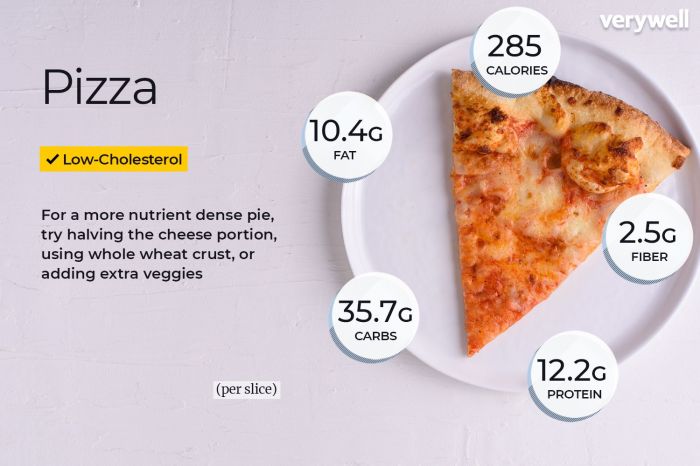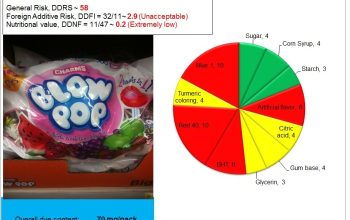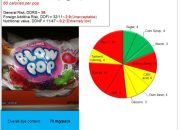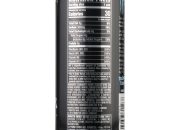Domino’s Pizza Nutritional Information Overview: Domino’s Pizza Nutrition Facts

Domino’s pizza nutrition facts – Domino’s Pizza offers a wide variety of pizzas, and understanding their nutritional content is crucial for making informed dietary choices. This section provides an overview of the typical nutritional information found in Domino’s pizzas, highlighting variations across different crust types and toppings. Remember that nutritional values can vary slightly depending on preparation methods and specific ingredients used.
Nutritional Content of Domino’s Pizzas
The nutritional content of Domino’s pizzas varies significantly depending on factors such as crust type, size, and toppings. Generally, a single slice of a Domino’s pizza contains a considerable amount of calories, carbohydrates, and fat, with varying levels of protein. The following table provides a general overview of the nutritional information you might expect. Note that these values are estimates and can differ based on the specific pizza ordered.
| Nutrient | Typical Range per Slice (1/8 of a large pizza) |
|---|---|
| Calories | 200-350 |
| Fat (grams) | 8-18 |
| Protein (grams) | 5-10 |
| Carbohydrates (grams) | 25-40 |
Variations in Nutritional Content Across Pizza Types
The choice of crust and toppings significantly impacts the nutritional profile of a Domino’s pizza. Here’s a comparison:
Understanding these differences allows consumers to make choices that align with their dietary needs and preferences.
- Crust Type: Thin crust pizzas generally have fewer calories and carbohydrates compared to hand-tossed or pan pizzas. For example, a thin crust pepperoni pizza will typically have fewer calories than a hand-tossed pepperoni pizza of the same size.
- Toppings: Meat toppings such as pepperoni, sausage, and bacon add significantly to the fat and calorie content. Vegetable toppings, on the other hand, can contribute fiber and vitamins while adding fewer calories. A cheese pizza will naturally have fewer calories than one loaded with extra meat and cheese.
- Cheese: The amount of cheese used also affects the nutritional values. Extra cheese will increase the calories, fat, and protein content.
Accessing Nutritional Information on Domino’s Website and Mobile App
Domino’s provides detailed nutritional information for its pizzas and other menu items through its website and mobile app. The user experience is generally straightforward. On the website, users can typically find a “Nutrition” section, often accessible via a footer link. Within this section, a searchable menu allows users to select the specific pizza and customize it with toppings to view the updated nutritional information.
The mobile app provides a similar experience, often integrating the nutritional information directly into the ordering process. Users can view the nutritional breakdown before finalizing their order. The information is typically presented clearly, listing calories, fat, carbohydrates, protein, and other relevant nutrients per serving.
Serving Sizes and Calorie Counts

Understanding Domino’s serving sizes is crucial for managing your calorie intake. Domino’s typically lists nutritional information per slice and per whole pizza, allowing for easy calculation based on your consumption. This information is vital for making informed choices about your diet.Domino’s serving sizes are generally consistent across their pizza types, although the calorie count will vary considerably depending on the crust type (thin crust, hand-tossed, etc.), toppings, and pizza size.
A single slice of a standard Domino’s pizza might represent approximately one-sixth to one-eighth of the whole pie, depending on the size ordered. This means that the calorie count per slice will be proportionally smaller than the total pizza calorie count. However, consuming multiple slices dramatically increases your overall calorie consumption.
Calorie Variation Across Serving Sizes
The difference in calorie intake between consuming a single slice versus an entire pizza is significant. For instance, a single slice of a pepperoni pizza might contain around 200-250 calories, whereas the entire pizza could easily exceed 1500-2000 calories. This difference is primarily due to the increased quantity of cheese, sauce, and toppings present in a larger serving. Choosing a smaller pizza or fewer slices directly impacts the total number of calories consumed.
Domino’s pizza nutrition facts often highlight the high calorie and fat content, leading many to seek healthier alternatives. A comparison might involve considering healthier fats, such as the information provided on 1 tablespoon olive oil nutrition facts , to understand the nutritional differences. Ultimately, understanding both helps in making informed choices regarding Domino’s pizza consumption.
Visual Representation of Calorie Differences, Domino’s pizza nutrition facts
Imagine a bar graph. The horizontal axis represents the portion size: “One Slice,” “Half a Pizza,” and “Whole Pizza.” The vertical axis represents the calorie count. The bar for “One Slice” would be relatively short, perhaps reaching the 200-250 calorie mark. The bar for “Half a Pizza” would be considerably taller, reflecting roughly double the calories of a single slice (400-500 calories).
Finally, the bar for “Whole Pizza” would be the tallest, representing a significantly higher calorie count (1500-2000 calories or more, depending on the pizza’s size and toppings). This visual representation clearly illustrates the substantial impact of portion size on overall calorie intake.
Dietary Considerations and Domino’s Pizza

Domino’s Pizza, while known for its classic pizzas, also offers options that cater to various dietary needs and restrictions. However, it’s crucial for individuals with specific dietary requirements to carefully review the nutritional information and ingredient lists before ordering to ensure the pizza aligns with their needs. Understanding the limitations and potential challenges is key to making informed choices.
Domino’s attempts to provide choices for those with specific dietary needs, but it’s essential to remember that cross-contamination in a busy kitchen environment is always a possibility. Therefore, individuals with severe allergies or intolerances should exercise extra caution and possibly contact the restaurant directly to discuss their concerns before ordering.
Vegetarian Options at Domino’s
Domino’s offers several vegetarian pizza options, typically featuring vegetables as toppings. These pizzas generally exclude meat and seafood, making them suitable for vegetarians. However, it’s important to check the ingredients list for any potential hidden animal products, such as cheese made with animal rennet or certain processed vegetable toppings. Always confirm that the chosen pizza and its ingredients are compatible with a strict vegetarian diet.
For example, a veggie supreme pizza might contain cheese that meets vegetarian standards, while other vegetable-based pizzas might contain a different cheese or other ingredients that could be an issue.
Gluten-Free Pizza Options at Domino’s
Domino’s offers a gluten-free crust option for customers seeking to avoid gluten. This is a significant step toward inclusivity for those with celiac disease or gluten sensitivity. However, it is crucial to be aware that the gluten-free crust is prepared in a shared kitchen environment, increasing the risk of cross-contamination with gluten-containing products. Domino’s clearly labels their gluten-free crust pizzas; however, customers should be mindful of this potential cross-contamination risk.
This means that those with severe gluten sensitivities should proceed with caution and consider the level of risk acceptable to them.
Low-Carb Pizza Options at Domino’s
Domino’s doesn’t explicitly advertise “low-carb” pizzas. However, customers seeking to reduce carbohydrate intake can choose thinner crust options or focus on pizzas with a higher proportion of vegetables and lower amounts of cheese. Reducing the amount of crust consumed will naturally reduce the carbohydrate intake. It’s important to remember that even with these strategies, pizza will still contain carbohydrates, and individuals tracking their carbohydrate intake should carefully review the nutritional information for their chosen pizza and toppings.
For instance, choosing a thin crust pizza with plenty of vegetables will have fewer carbohydrates compared to a thick crust pizza loaded with cheese and meat.
FAQ Section
What are the best low-calorie Domino’s pizza options?
Generally, thin crust pizzas with vegetable toppings and limited cheese will be lower in calories than thicker crusts with meat-heavy toppings.
Are there gluten-free options at Domino’s?
Domino’s offers gluten-free crust options; however, cross-contamination is always a possibility, so it’s crucial to inform the staff of your dietary restrictions.
How accurate is the nutritional information provided by Domino’s?
While Domino’s strives for accuracy, slight variations can occur due to factors like ingredient sourcing and preparation methods. It’s best to consider the values as estimates.
Can I customize my pizza to reduce its calorie count?
Absolutely! Requesting less cheese, choosing leaner meats, and loading up on vegetables are all excellent ways to customize your pizza for a lower calorie count.
Does Domino’s offer vegetarian pizza options?
Yes, Domino’s offers several vegetarian pizza options, including those with various vegetable toppings.








